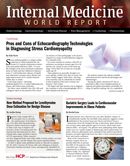Publication
Article
Internal Medicine World Report
Aiming for an "Acceptable" Pain Level for Children
Author(s):
For children, pain management regimens should aim for an acceptable level of pain, optimal mobilization, and minimal side effects, according to research published in Pediatric Anesthesia.

For children, pain management regimens should aim for an acceptable level of pain, optimal mobilization, and minimal side effects, according to research published in Pediatric Anesthesia.
With morphine, paracetamol, and local anesthetics being painkilling staples, their limited effectiveness and side effects have called their effectiveness into question.
Through a literature review, Astrid Lindgren Children’s Hospital researcher Stefan Lundeberg, found while a reduction of pain is key, attempts by doctors to completely remove pain in children isn’t practical.
“There is also a misconception that a combination of paracetamol and opioids will solve most types of pain,” he noted.
Lundeberg claimed this is caused partly due to nurses’ common knowledge of common analgesics, but a lack of use in their daily practice. The phenomena, called the knowing-doing gap, is also common among doctors who work with adults, have sole prescribing responsibilities, and/or have no overall interest in pain management.
“A combination of lack of interest/knowledge with the fear of using ‘strong’ analgesics in children further limits an effective pain management,” he wrote.
Since many doctors believe a combination of paracetamol and opioids will curtail most pain, which is a misconception, he recommended, “a simple pocket fit protocol for pain treatment with updated drugs and doses in combination with a basic comprehensive and repeated education in pain would be beneficial for improving pain treatment in pediatric patients.”
Furthermore, Lundeberg mentioned pain scales may be interesting to practitioners, but less so for patients. To grasp a patient's’ level of pain, clinicians should ask if the pain they are experiencing is acceptable given their underlying condition.
“Pain assessment tools are informative to some extent and maybe more in the perspective to evaluate pain treatment in regard of periods of breakthrough pain and whether theses period are acceptable or not,” Lundeberg noted.
Additionally, long-term and neuropathic pain were more difficult to treat depending on their underlying cause. For neuropathic pain, treatment options are extremely limited. However, gabapentin or tramadol can benefit individuals with nerve damage. While dizziness and nausea are common side effects when treating nociceptive pain with tramadol, these symptoms are not present in people suffering from neuropathic pain.
“Long-term pain syndromes are seldom responsive to analgesics used for nociceptive or neuropathic pain and therefore analgesic medication may be discontinued,” he recommended.
While there are many effective medications available, side effects act as the biggest obstacle to creating a worthwhile and effective regimen. Because of this, vitals should be taken, side effects should be monitored by an informed staff, and withdrawal effects should also be monitored and prevented through weaning medications.
Based on his analysis of pain management in children, he asserted their treatment could be improved through an increase of interest and an improvement education involving doctors’ analgesics prescription.
“In the horizon, few new treatment possibilities or analgesics can be discovered, so, we have to use the existing analgesics in a more clever and efficient way,” the author wrote. “The bottom line is, with a little effort and interest; we can do better than using the traditional analgesic regime.”






